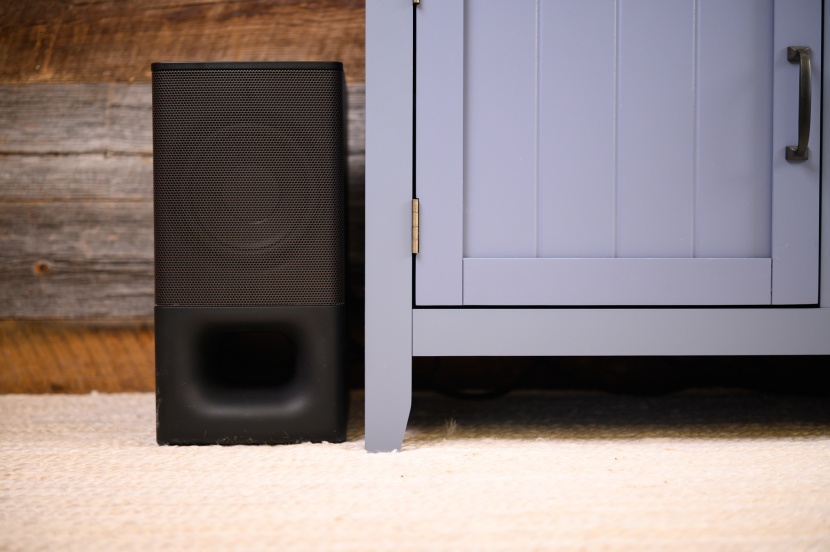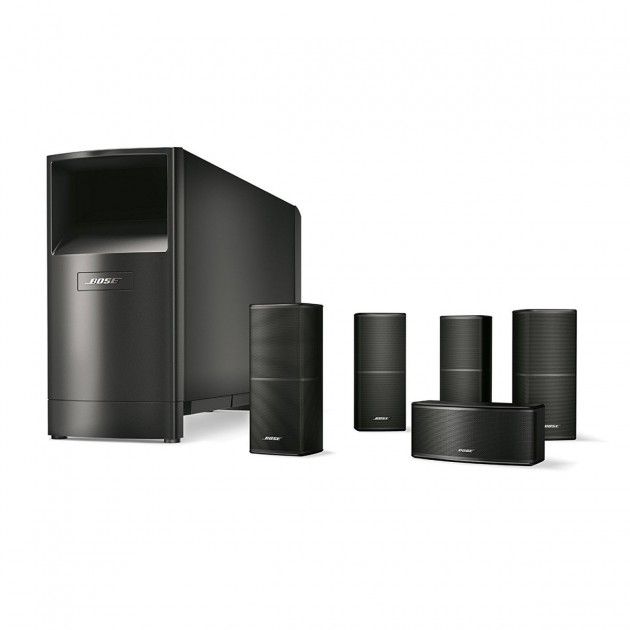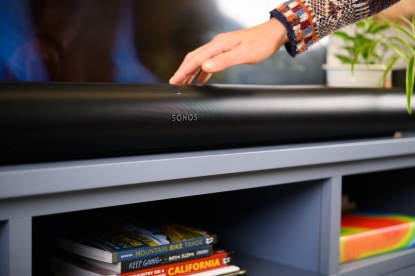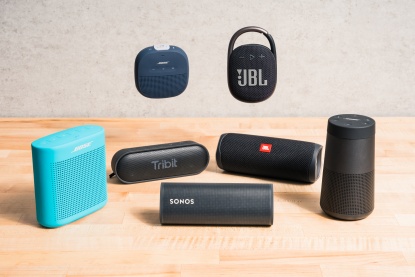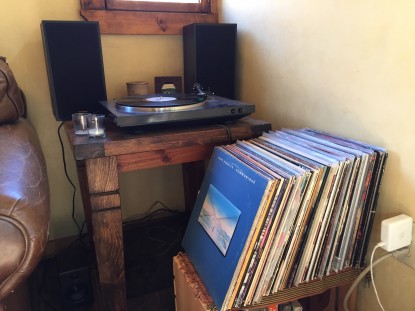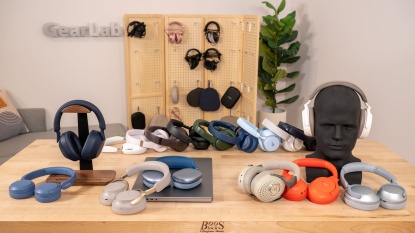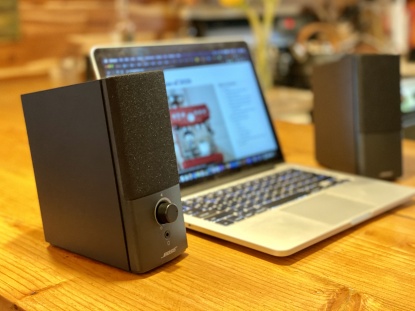Have you ever wished you could upgrade the sound quality of your movie night, but balk at the price and effort required in buying and installing a surround sound system? Enter the soundbar. It offers close to the same enveloping sound as a surround sound system but in a single, simple, and self-contained unit that often costs much less. Just plop it in front of your TV, plug in one or two cables, and you're generally good to go. These space-saving devices are also great for small apartments where you don't want to have a bunch of speakers lying around. Despite their simplicity, however, it can be difficult to tell which one will work best for your living room and budget. Below we've put together a guide that outlines all the decisions you need to make on the way to the perfect soundbar. We've also compiled some helpful background information about soundbars and sound systems in general, in case you want to dig a little deeper.
Do You Need a Soundbar?
If you're not satisfied with how your TV sounds, you're not alone. TVs have been getting progressively skinnier over the last decade, leaving less room for speakers, and less room for sound to bounce around. Also, the designs of most flatscreen TVs dictate that the speakers point away from the viewer, using the wall as a bit of an amphitheater to bounce the sound back in the right direction. Because of this less than ideal design, almost any soundbar is going to improve your TV's sound quality, if nothing else because the speaker is actually facing in the right direction. In fact, the lowest-priced soundbars in our review all make most TVs sound orders of magnitude better. So if you just don't like how shallow and dull your TV sounds, a soundbar is the easiest, and often least expensive, way to rectify that issue.
How Much Do You Want to Spend?
Almost every soundbar on the market is going to provide a significant increase in sound quality when compared to a TV's built-in speakers. Generally speaking, the more you spend, the better sound quality you will get. A $250 soundbar will be a big improvement in sound compared to a TV's speakers, and $800 will get you a top-of-the-line soundbar that will bring you close to what a surround sound system would deliver.
Do You Need Powerful, Rumbling Bass?
There are many people out there that feel a strong and powerful low end is what really makes audio systems sound better. If you're one of those people you may want to consider a soundbar with an external subwoofer. These models tend to produce much boomier bass than completely self-contained soundbars. Just remember, you'll have to plan where you want to put that subwoofer and connect it to a power outlet.
Surround Sound
If you're not sure whether you would be satisfied with a soundbar or should just go full out with a surround sound system, you might want to start with a soundbar that can be paired with other speakers to create a complete surround sound system later on down the road. Sonos and Bose both allow you to easily connect multiple speakers via your WiFi network, so you can expand your sound system if the soundbar alone isn't cutting it for you.
Do You Need Bluetooth?
Most soundbars allow you to simply pair your phone or tablet using a Bluetooth connection. One glaring exception are the soundbars from Sonos All of Sonos's products instead create an 'ecosystem' across your WiFi network that you can access via the Sonos App. This has some big advantages, like the fact that your music won't be interrupted by your phone alerts, and it makes it very easy to control multiple speakers if you've upgraded to a multi-piece Sonos system. However, you have to play all of your music through the Sonos App (or apps that allow you to directly connect to a device, like Spotify), which adds an additional step if your visitors want to play music from their phones. Bluetooth pairings are quick and easy, and your friends can walk into the living room, pair with a bluetooth enabled soundbar, and start streaming their music. Bluetooth also allows you to use your soundbar with certain projectors. While you don't need Bluetooth for a great home theater experience, it sure is convenient to include on a soundbar.
Consider Style
Remember that your soundbar will most likely be displayed as prominently as your TV, so you'll want something that will fit in with the rest of your living room. Style can be quite subjective, so make sure you check out all of the product photos before you buy. Our general recommendation is to go for a soundbar that looks nice when you look at it, but doesn't attract your visual attention when you aren't trying to look at it.
Alternatives to Soundbars
Soundbars are generally the simplest way to get better sound out of your TV. However, there are other options you might want to consider.
Soundbases
Soundbases are very similar to soundbars, except they are much broader and you are meant to place your TV directly on top of them. In fact, many of them are rated for how large of a TV they can support. Thicker soundbases tend to sound a bit better than soundbars because they can fit larger drivers. However, thicker soundbases also raise your TV higher. Since most TV stands are designed to be the perfect height, adding a thick soundbase may throw things off a bit. Because of this, most new soundbases are designed to be skinnier, and thus don't have larger drivers. Also, soundbases cannot be mounted on a wall, whereas soundbars excel in that orientation.
Surround Sound Systems
Surround sound systems are more complicated and can add more effects than both soundbars and soundbases. Namely, they can provide true surround sound due to their multiple speakers (more on that in a second). Some soundbars and soundbases can add some directionality to sound, but they don't truly succeed quite on the level as literally having speakers all around you. For soundbars to achieve a similar effect, they need to be able to project sounds off your walls and ceiling. Soundbars that support Dolby Atmos or DTS Virtual:X formats are equipped to do this, though with varying levels of effectiveness. The Bose Smart Soundbar 700 uses proprietary ADAPTIQ technology to calibrate itself to a room and add an extra dimension to any Audio format, though it's not “object-based” like Dolby Atmos or DTS Virtual:X.
What Do These Channels Mean?
You may have noticed that many soundbars are advertised as 2.1 channel, or something similar. The first number refers to the number of discrete speakers within the soundbar, in this case, 2. That means the soundbar can make sound come just out of its left side, or just out of its right side. This adds some surround sound type effects to your movie-watching experience. Other soundbars have three channels, so the sound can somewhat flow from left to right as a car screeches across the screen.
The second number (following the decimal point) refers to the number of external subwoofers a soundbar has. In the case of a 2.1 channel model, it would have one external subwoofer (it would be very uncommon to see more than one subwoofer unless you're looking at a top-of-the-line surround sound system).
True surround sound is generally considered 5.1 and up (you've probably seen 5.1 Dolby Digital Surround splashed across the covers of DVDs and Blu-rays). Most surround sound systems have 3 speakers in front (center, right, and left), 2 behind you, and a subwoofer. This can truly make it feel like sounds are coming from all around you.
Connecting Your Soundbar
Most soundbars can be connected to a TV via a multitude of connections, so as long as your TV is less than 10 years old, chances are it will be compatible with your soundbar. The most common connection is via an HDMI cable. Most TVs have an HDMI out port, allowing for a single cable connection. If your TV doesn't have an HDMI out, most soundbars have both an in and out, so you can plug your cable box directly to the soundbar, and then the soundbar to the TV. If HDMI isn't your thing, a few soundbars also have classic RCA, coaxial, and mini-jack inputs. Finally, almost all soundbars can be connected to a phone or tablet wirelessly, via either WiFi or Bluetooth, or sometimes both.


